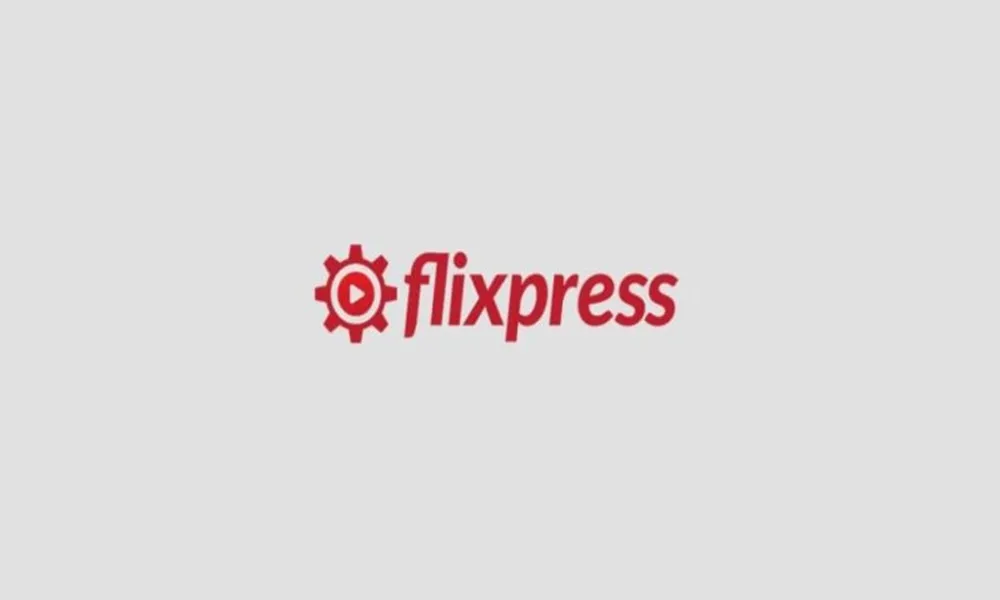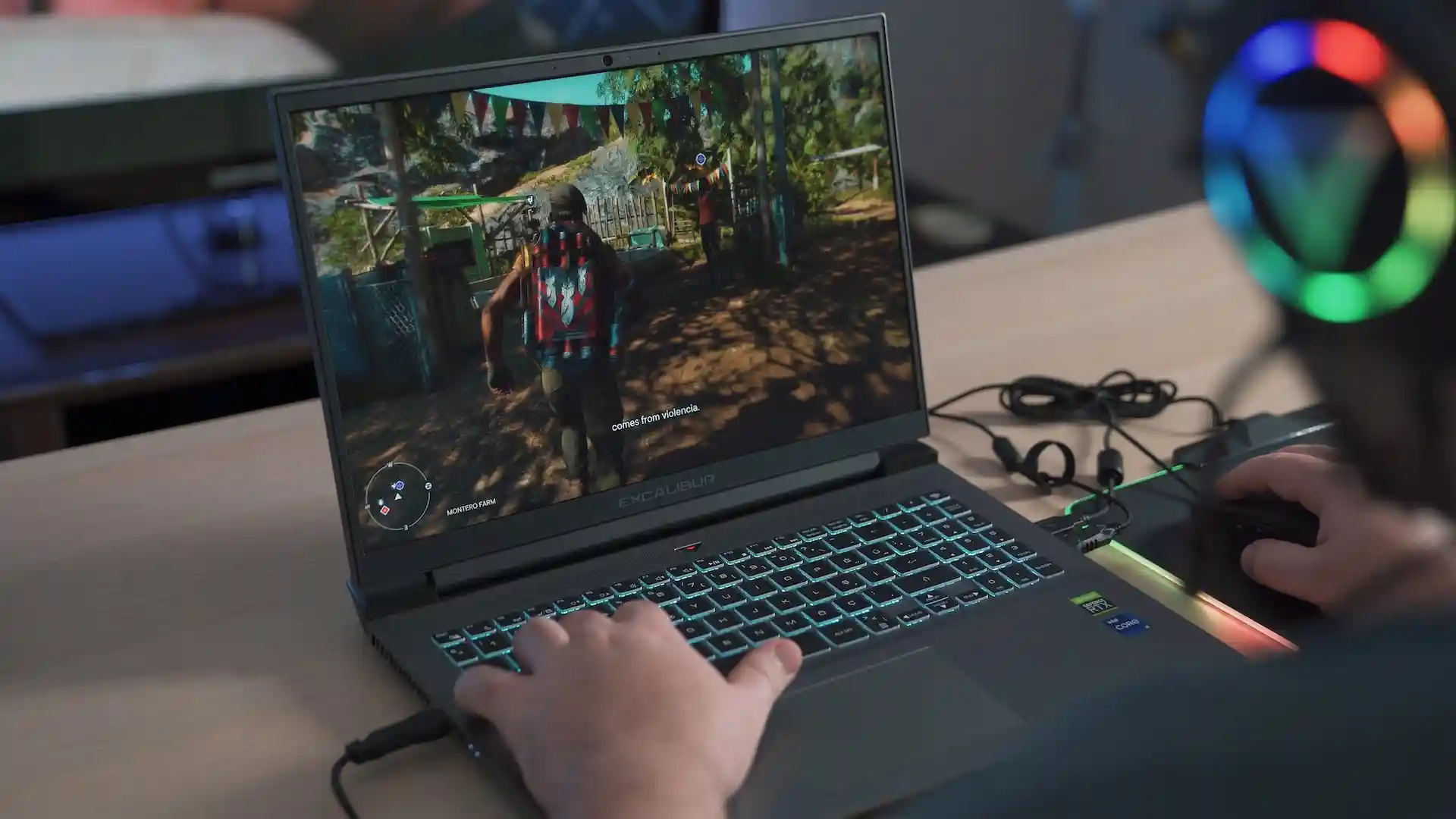Social Media
Mastering the Art of Posting on LinkedIn

LinkedIn has evolved from a simple professional networking platform to a dynamic hub for content sharing, career development, and industry insights. With over 774 million members worldwide, LinkedIn offers unparalleled opportunities for professionals, businesses, and job seekers to connect, engage, and grow their networks. However, with the platform’s increasing popularity and competition, mastering the art of posting on LinkedIn has become essential for standing out and achieving your goals. In this comprehensive guide, we’ll explore strategies and best practices for crafting compelling LinkedIn posts that resonate with your audience, enhance your credibility, and drive engagement.
Know Your Audience:
Before you start posting on LinkedIn, it’s crucial to understand your target audience and their preferences. Consider the demographics, interests, and professional backgrounds of your connections and followers. Tailor your content to address their needs, challenges, and interests. Whether you’re targeting industry professionals, potential clients, or job seekers, crafting relevant and valuable content is key to capturing their attention and fostering meaningful engagement.
Establish Your Brand Voice:
Your LinkedIn posts are a reflection of your personal brand and professional identity. Establishing a consistent brand voice helps you build credibility, trust, and recognition among your audience. Whether you’re sharing industry insights, thought leadership articles, or personal anecdotes, infuse your posts with authenticity, expertise, and personality. Consistency in tone, style, and messaging strengthens your brand presence and makes your content more memorable and impactful.
Provide Value:
LinkedIn users are inundated with content daily, so it’s essential to provide value and relevance in your posts. Share insights, tips, and resources that educate, inspire, or entertain your audience. Offer solutions to common challenges, share success stories, or provoke thought-provoking discussions. By delivering valuable content that addresses your audience’s needs and interests, you can establish yourself as a trusted authority in your field and attract followers who value your expertise.
Optimize for Engagement:
Engagement is key to the success of your LinkedIn posts, as it increases visibility, reach, and impact. Encourage interaction by asking questions, soliciting opinions, or inviting readers to share their experiences. Use relevant hashtags to increase discoverability and join conversations around trending topics. Tag individuals or companies mentioned in your posts to expand your reach and foster connections. Additionally, timing plays a crucial role in engagement, so experiment with posting at different times to determine when your audience is most active and receptive.
Leverage Visual Content:
Visual content is highly engaging and attention-grabbing on LinkedIn. Incorporate images, videos, infographics, and SlideShare presentations into your posts to make them more visually appealing and compelling. Visuals help break up text, convey complex information more effectively, and capture the audience’s attention as they scroll through their feeds. Experiment with different types of visual content to see what resonates best with your audience and drives the most engagement.
Craft Compelling Headlines:
The headline is the first thing users see when scrolling through their LinkedIn feeds, so make it count. Craft compelling headlines that grab attention, arouse curiosity, and entice users to click and engage with your post. Use action verbs, numbers, and keywords to make your headlines more compelling and actionable. Experiment with different headline formats, such as lists, questions, or statements, to see what resonates best with your audience.
Monitor and Analyze Performance:
Once you start posting on LinkedIn, it’s essential to monitor and analyze the performance of your posts regularly. Pay attention to metrics such as views, likes, comments, and shares to gauge engagement and effectiveness. Identify trends, patterns, and insights to inform your content strategy and refine your approach over time. LinkedIn’s built-in analytics tools provide valuable insights into your audience’s behavior and preferences, helping you optimize your posting strategy for maximum impact.
Conclusion:
Mastering the art of posting on LinkedIn is essential for building your professional brand, expanding your network, and achieving your goals. By understanding your audience, establishing your brand voice, providing value, optimizing for engagement, leveraging visual content, crafting compelling headlines, and monitoring performance, you can create compelling LinkedIn posts that resonate with your audience and drive meaningful engagement. Experimentation, creativity, and consistency are key to success on LinkedIn, so don’t be afraid to try new approaches and refine your strategy based on feedback and insights. With the right approach, you can elevate your presence on LinkedIn and unlock new opportunities for growth and success in your professional journey.
Social Media
100+ Cool, Funny & Creative Nicknames That Start with “A”

Nicknames are like inside jokes you can wear. You’ve got cool ones, quirky ones, and those funny names that make you laugh every time someone says them. Whether you’re out to find nicknames that start with A for your best friend, your sibling, or even for yourself, there’s a treasure trove waiting for you. Some of these will make you sound like an action hero, and others will have you grinning like a goofball. Trust me—I’ve been there. I once called my cousin “Alfredo” for months because I thought it sounded fancy. He hated it. It stuck.
Anyway, I’m here to help you out with a list of nicknames that start with A, split into categories, and spiced up with a little personality. You’re welcome.
Why Nicknames That Start With “A”?
I’ll be honest—I don’t know why I love names that start with A so much. Maybe it’s the way it sounds. Alpha, Apex, Ace… it’s like you’re already destined to be awesome. But hey, there’s something undeniably cool about nicknames that start with A. Here’s a few reasons why they might be your new go-to:
- Easy to remember: Seriously, “A” is everywhere.
- Endless possibilities: Whether you want something wicked cool or just ridiculously funny, nicknames with A fit the bill.
- Goes with everything: No matter who you’re trying to nickname, A names just seem to work. I mean, how can you resist calling someone “Ari” or “Apple”?
Now that you know why nicknames that start with A are so special, let’s dive in and see which one sticks.
1. Cool Nicknames That Start With “A”
Alright, cool vibes only here. If you want a nickname that’ll make you sound like you just walked out of a movie, here’s a few cool ones that’ll fit like your favorite hoodie.
Apex
- Meaning: The top. The best. The leader. The one who’s always ahead of the curve.
- Example: “Apex, you’ve got this—no sweat.”
- The name screams “champion,” doesn’t it?
Ace
- Meaning: If you’re the top dog, this one’s a no-brainer.
- Example: “Need someone to ace this test? Call Ace.”
- I think we all know an Ace, someone who’s effortlessly good at what they do. I tried to be Ace once… but it was a paper airplane contest, and, well, it wasn’t my best day.
Atlas
- Meaning: Strong and reliable. Kind of like the guy who carries the world on his shoulders.
- Example: “No worries, Atlas, we’re in good hands.”
- One time, I had a friend who tried to lift a giant stone in a park. Spoiler: He didn’t get very far. Still, the name Atlas would’ve been perfect for him.
Alpha
- Meaning: The leader of the pack. The one who’s always calling the shots.
- Example: “Follow Alpha. He knows where we’re going.”
- Every group needs an Alpha. I try to be the Alpha, but somehow I’m usually the one losing the directions.
Apollo
- Meaning: Named after the god of the sun, Apollo represents someone who shines bright.
- Example: “Look at you, Apollo, lighting up the whole room.”
- Fun fact: I once thought the Greek god Apollo was a rock band. Don’t ask. (RIP, my historical knowledge.)
2. Funny Names That Start with “A”
Let’s face it: We all need some laughter in our lives. If you’re looking for something that’ll make everyone crack up, here are some funny names that start with A.
Alfredo
- Meaning: It’s just hilarious. It sounds so serious, but it’s actually the name of a pasta sauce.
- Example: “Yo, Alfredo, grab the snacks!”
- My cousin didn’t appreciate this one when I called him Alfredo for a year. But hey, I thought it sounded sophisticated. “Alfredo, please,” I would say. He was not amused.
Airhead
- Meaning: If you forget your keys every five minutes, this one’s for you.
- Example: “Oh great, Airhead left his phone at the coffee shop.”
- The first time I earned this nickname was when I lost my wallet… three times in one week. Fun times.
Annoying Ant
- Meaning: For the friend who can’t stop talking.
- Example: “Annoying Ant is here with the gossip!”
- To be clear, I might have been the Annoying Ant once or twice. Maybe more.
Apple Pie
- Meaning: Sweet, warm, and totally comforting. It’s like the human version of a hug.
- Example: “Apple Pie, can you bring that warm charm over here?”
- A friend gave me this nickname when I tried to bake my first pie. It was a disaster. The kitchen was not happy. I’m better with cookies. Way better.
Auntie A
- Meaning: The cool, caring aunt figure.
- Example: “Hey Auntie A, bring out the wine!”
- This is a classic. If you’re that one friend who’s always looking out for everyone, “Auntie A” could be your thing.
3. Code Names That Start with “A”
Look, I can’t promise you’ll be a secret agent just because you pick one of these, but these code names that start with A sure make you feel like you’re on a mission.
Avalanche
- Meaning: Powerful, unstoppable.
- Example: “Avalanche is on the move. Watch out!”
- This would’ve been perfect when I spilled an entire coffee pot during a team meeting. The ripple effect was… an avalanche of spilled secrets.
Android
- Meaning: Technology, efficiency, and a little bit of sci-fi.
- Example: “Alright, Android, reboot the system!”
- Fun fact: I once tried to make a robot out of a cereal box. It didn’t look anything like an Android. But hey, it was a good attempt.
Arctic Fox
- Meaning: Clever and stealthy.
- Example: “Agent Arctic Fox is ready for the mission.”
- Also, I’m pretty sure I was called “Arctic Fox” for about a month after I snuck into the kitchen and ate the last piece of chocolate cake. Stealth level: expert.
Assassin
- Meaning: Quiet, quick, efficient—perfect for someone who’s always on the move.
- Example: “Assassin, your mission is a go.”
- I tried to use this name once. It lasted a day. After I tripped over a rug and spilled my lunch everywhere, I had to call it quits. The irony wasn’t lost on me.
Archangel
- Meaning: Powerful and protective, with a bit of divine flair.
- Example: “We need Archangel on this. Stat!”
- I considered naming my first pet fish “Archangel.” He didn’t last long. RIP, Fluffy.
4. Cute Nicknames That Start with “A”
There’s something special about cute nicknames—they make you want to give someone a hug just by saying their name. Here are some of the sweetest nicknames that start with A.
Angel
- Meaning: Pure and innocent, like a little guardian angel.
- Example: “You’re my Angel, always looking out for me.”
- My aunt called me Angel once, right before I accidentally broke a vase. I think she was in denial.
Apple
- Meaning: Sweet, soft, and cute.
- Example: “Hey, Apple, want to grab lunch?”
- This was the nickname I gave my cat. She was super tiny, and I just couldn’t stop calling her “Apple” every time she came running.
Alfie
- Meaning: It’s cute. It’s snappy. It’s got that vibe.
- Example: “Alfie, where are you hiding?”
- This one reminds me of a kid in my class who was way too good at dodgeball. Alfie was always the last one standing. Always.
Ari
- Meaning: Short, sweet, and modern.
- Example: “Ari, you’re a total rockstar.”
- I tried to name a goldfish “Ari,” but… well, the fish died before I could tell him he was a rockstar. RIP.
Aubrey
- Meaning: Soft, sweet, and slightly vintage.
- Example: “Aubrey, I swear you’re always in a good mood!”
- My friend Aubrey literally never has a bad day. I’m not saying she’s perfect… but she might be.
Conclusion
There you have it—100+ nicknames that start with A. Whether you need cool nicknames for your latest group chat, funny names that start with A to mess with your friends, or creative code names that start with A, there’s definitely something in here that’ll make you smile. The possibilities are endless, and hey—whether you go with nicknames with A like Ace or Apple, you’ll be in good company.
Social Media
Flixpress Intro Maker – Free Intros & APK Download Guide

Alright, so here’s the deal—whether you’re a content creator, a business promoting a product, or just someone who wants to add that extra zing to your YouTube channel, having a killer intro can make all the difference. And no, you don’t need to hire a whole team of animators to pull it off. Enter Flixpress Intro Maker—the good kind of game-changer. It’s simple, fast, and (get this) free. Yeah, you heard me right. Free intros. Well, at least some of them.
But what makes Flixpress so darn special? Let me walk you through the ins and outs, the how-tos, and why this might be the only intro maker you’ll ever need. Spoiler alert: I promise, there’s no need to be a pro editor to make something that looks like you are one.
So… What Exactly is Flixpress Intro Maker?
Alright, let’s cut to the chase. Flixpress Intro Maker is an online tool that helps you create intros, outros, and even animated logos. Perfect for YouTubers, marketers, or anyone who just needs an intro that’s slicker than a greased pig (I’ve never done that, but it sounds fun). The real beauty here is that you don’t need to have any background in video editing. Just pick a template, customize it to fit your vibe, and boom—you’ve got yourself an intro. It’s that easy.
Key Features of Flixpress Intro Maker
Here’s why you might want to give Flixpress Intro Maker a shot:
- Customizable Templates: It’s like a buffet of options. Flixpress has a ton of intro templates to choose from. Whether you’re going for sleek and minimalist or bold and in-your-face, there’s something for every kind of video.
- Quality Animations: These intros aren’t some cheap, janky animations you’d get off a sketchy site. No, no. Flixpress Intro Maker offers high-quality animations that’ll make your videos feel more polished and professional.
- Easy-to-Use Interface: If I can figure it out, so can you. Seriously, I once tried to assemble an Ikea bookshelf and nearly turned the living room into a war zone. Flixpress? Easy as pie.
- Free and Paid Versions: Want to dip your toes into the pool before you jump in? You can start with the free version of Flixpress and then decide if you want to grab the premium plan for extra features.
- Multiple Output Formats: You can export your intro in various formats, making it easy to integrate with whatever video editing software you’re using. Seriously, no headaches here.
The Magic of Flixpress Free Intro Templates
Okay, now here’s the good part—Flixpress free intro templates. Free! I know, I know, you’re thinking, “This can’t be true.” But it is. You can pick from a variety of free templates to make something that looks like you paid top dollar for it. Even with the free version, you’re getting a solid intro.
For real, the options are wild. Whether you’re doing a gaming channel, a DIY vlog, or something corporate, there’s a template waiting for you. You get to tweak colors, fonts, and even swap in your logo or a custom background.
I remember when I tried to create my first YouTube intro—used a Flixpress free intro template that was surprisingly way better than I expected. The fact that I got something that looked semi-professional without diving into After Effects? Blessing. Total game-changer.
How to Use Flixpress Intro Maker
So, you’ve made it this far. You’re probably itching to get your hands on the Flixpress Intro Maker tool. Here’s how you do it. It’s not complicated at all (unlike that time I tried to fix my grandma’s old blender and ended up making strawberry smoothies for the entire block).
Step 1: Sign Up for Flixpress
First things first: head to the Flixpress website and sign up for an account. If you’re the type of person who avoids emails like it’s the plague, don’t worry—Flixpress won’t bombard you with spam.
Once you’re in, you can dive right into choosing your intro template. There are plenty of free ones, but hey, there’s no shame in checking out the premium options, too.
Step 2: Pick Your Intro Template
Now, time to scroll through the templates. Seriously, this part might take you a few minutes (or a few hours if you’re indecisive like me). Whether you want something funky, retro, or corporate, you’ll find something that screams “me.” Once you find one that clicks, hit that “customize” button.
Step 3: Customize Your Intro
Here’s where you get to play around and let your creative juices flow. Customize the text, font, color, and layout. Throw in your logo, change the background, and maybe even tweak the music a little if you’re feeling bold. Trust me, it’s super intuitive.
I’m telling you, my first intro was a complete hot mess, but with Flixpress, I managed to make something that looked way better than it had any business looking. Totally impressed myself.
Step 4: Preview and Export
Once you’ve finished tweaking, hit that preview button. You’ll get a sneak peek of your intro. If it looks good, export it. It’s really that easy. You can save it in different formats, too, which makes it easy to incorporate it into whatever editing software you use.
Flixpress APK Download Guide
Here’s where the fun part happens for all you mobile lovers. Not feeling the desktop vibe? Download the Flixpress APK and start making intros on your phone. So, while your friend is stuck trying to use After Effects in a coffee shop, you’re over here, creating a snazzy intro while waiting for your iced latte.
How to Download and Install Flixpress APK
- Get the APK File: Head to the official Flixpress website or another trusted APK site and download the Flixpress APK.
- Enable Unknown Sources: Here’s the trick—your phone won’t let you install the APK unless you give it permission. Go to settings, hit “Security,” and toggle on “Install from Unknown Sources.”
- Install the APK: Open the file and tap “Install.” It should take no time at all.
- Open the App: Once it’s installed, go ahead and open the app. You’ll be able to start creating intros right on your phone. Don’t worry, it’s just as smooth as the desktop version.
Why You’ll Love the Flixpress APK
- Mobile Convenience: You can make intros anytime, anywhere. I made an intro while sitting in my mom’s living room, trying to convince her that my plant obsession wasn’t a problem.
- Template Access: The mobile version gives you access to all the same templates and features as the desktop version.
- Super Simple: If I can use it while my 2-year-old is throwing goldfish crackers at my face, you can totally handle it.
Why Go With Flixpress For Free Intros?
Now, let’s talk about why Flixpress Intro Maker is seriously one of the best options out there. I mean, you could try other free tools, but trust me, you might end up with a mediocre result. Plus, you don’t need to learn a thousand new things. Just hop on, pick a template, and make it work for you.
1. High-Quality Intros
Even if you’re using a Flixpress free intro, the quality is pretty impressive. I’m talking about animations that actually look good and don’t make you want to throw your laptop out the window.
2. Easy to Use
This platform is idiot-proof. It’s all drag-and-drop and customization options, with no crazy learning curve. That’s saying something because I once spent three hours trying to figure out how to make a “filter coffee” on Pinterest and still messed it up.
3. Totally Free Options
Let’s get this straight: Flixpress free intro templates are legit. And yes, you can create something that looks expensive with zero investment. I mean, unless you’re investing in a coffee machine because you need caffeine to get through these projects. But that’s another story.
4. Lots of Templates
The sheer number of templates is insane. You can pick something that fits your brand or the mood of your video. And it’s constantly updated, so you won’t run out of options anytime soon.
5. No Software Downloads
Unlike other tools, you don’t need to worry about downloading heavy software. You can create intros directly in your browser. Easy, breezy, no headaches.
Final Thoughts
So, if you’re in the market for a simple, no-fuss intro maker, Flixpress Intro Maker should be at the top of your list. Whether you’re using the flixpress intro templates for free or diving into the Flixpress APK download for mobile editing, there’s a lot of power packed into this tool. And best of all, you don’t need to be a video editing expert to make your intros look professional. Go on, give it a try—your videos will thank you.
Social Media
FlixPress Intro Maker – Create Free Intros Online Fast

Ah, intros. You know, the little video snippets that make or break the vibe of your content. Whether it’s for a YouTube channel, an Instagram promo, or that weird TikTok trend you’re riding, a killer intro is essential. Enter FlixPress Intro Maker—the online wizard that’s making life easier for creators everywhere. This tool lets you create FlixPress intros in a jiffy, and guess what? You don’t need a degree in video editing to pull it off.
So, if you’ve ever tried to use some fancy video editor and ended up with a potato-quality intro or spent 45 minutes trying to remove a watermark (don’t lie, I’ve been there), FlixPress Intro Maker might just be your new best friend.
Anyway, here’s the kicker: I’m about to show you how to get those slick intros fast—and even better, for free. Yes, that’s right. FlixPress free intro options are a thing, and you can use them to spice up your videos like a pro (without the pro-level price tag). Let’s get into it.
What is FlixPress Intro Maker?
Alright, let’s break it down: FlixPress Intro Maker is an online tool that lets you create custom video intros—quick, easy, and mostly painless. If you’ve been around the content creation block, you’ve probably spent hours trying to figure out how to make an intro look just right. Spoiler: I have, and it didn’t end well. But FlixPress? Oh, it’s different. The platform gives you templates that are super easy to tweak, which means no more staring at a screen wondering if you should go with “cool font 1” or “cool font 2” for your name.
Here’s the cool thing: you don’t need to be a video editing wizard to make a pro-level intro. If I can do it, so can you. My first intro was so bad, it almost got flagged for excessive cringe. But with FlixPress Intro Maker, I was able to get my act together and create something that didn’t make my viewers cringe (at least not too much). I think.
Why Should You Use FlixPress Intro Maker?
It’s simple. If you want fast, no-fuss intros, FlixPress Intro Maker is your answer. Here’s why I swear by it:
- No Tech Skills Needed: You know how you thought you’d master Photoshop in a weekend? Well, spoiler alert: I didn’t. But with FlixPress Intro Maker, you don’t need to be a tech whiz. You just click, customize, and boom, intro done. Honestly, my five-year-old nephew could probably figure it out—and he still thinks “the internet” is a type of fish.
- Free Options Are Legit: Let’s talk about that FlixPress free intro. No hidden fees. Just a solid intro maker that’s 100% free. I can almost hear your sigh of relief. Trust me, when I saw the “free” tag, I knew I was dealing with a keeper.
- Tons of Customization: You can swap out text, change colors, tweak animations—you name it. It’s like playing dress-up for your videos, except you’re not dealing with glitter and awkward dresses. You can even upload your logo. Not to brag, but my logo (a stick figure holding a coffee cup) looks way better than it has any right to, thanks to FlixPress.
- Quick Turnaround: My videos used to take hours to edit, and intros? Ugh, I hated making those. With FlixPress Intro Maker, it’s a couple of clicks, and boom, you’ve got yourself an intro. I wish I could do everything this fast—like making dinner. Or cleaning my room. Or adulting in general.
How Does FlixPress Intro Maker Work?
You’re probably thinking: “Sounds too good to be true. What’s the catch?” I’ll be honest, there is a slight learning curve, but it’s nothing that’ll have you Googling “how to make an intro” at 3 AM.
Here’s what I did—and trust me, if I can do it, anyone can.
1. Sign Up (Or Don’t)
First things first: go to FlixPress.com. You’ll have to make an account, but it’s pretty painless. If you’re feeling rebellious (or just lazy), you can dive right in as a guest and start playing around with some templates. But I’d recommend signing up. You get access to more templates and features, like custom text animations. Plus, I totally forgot my guest login the first time. Rookie mistake.
2. Pick Your Template
Now, the fun part. FlixPress Intro Maker has a ton of templates to choose from, and no, it’s not just “Intro Template A” or “Intro Template B.” These are legit, high-quality templates that make your intro look like you spent hours on it (even though you didn’t). Pick something that suits your vibe—whether you’re making a gaming intro or a corporate one (or whatever weird niche you’re into—no judgment).
3. Customize It
Okay, here’s where you get to play Picasso. Change the text, swap out colors, upload your logo—whatever you need. You’ll probably spend a good 10 minutes trying to decide on a font (I did, no shame). The best part is that the interface is so user-friendly. You can tweak things until you’re satisfied.
Oh, and don’t get too carried away with the font size. My first intro looked like an episode of “Tiny Text, Big Drama.” You live, you learn.
4. Preview It
Once you’ve customized the intro to your liking, hit “Preview.” If it’s good to go, you’re golden. If not, just tweak it until your heart’s content. Trust me, the preview feature will save you from a lot of regret. Like the time I tried to make a logo animation and ended up looking like a dancing potato.
5. Download Your Intro
Once you’re happy with your creation, just hit “Download” and boom, you’re done. You can download your intro in various formats, depending on your needs. Free accounts might get lower quality or a watermark, but hey, that’s a small price to pay for something that didn’t cost you a dime.
Features of FlixPress Intro Maker
Templates Galore
Here’s the deal: FlixPress Intro Maker has templates for every niche. Whether you’re vlogging about your latest Ikea haul or reviewing the best cat food brands, you’re covered. And these aren’t just “meh” templates—they’re designed by professionals. Sure, there are basic options, but I swear, once I found the one that fit my style, it was like finding the perfect pair of jeans.
- Gaming Intros: If you’re deep into gaming content, there are templates that make your channel look so much cooler.
- Business Intros: Clean, sleek, and polished—perfect for any corporate video or presentation.
- Social Media Intros: Want to up your Instagram game? There’s an intro template for that too.
Customization
You get to mess with the details, which is wicked. From changing the text size to tweaking the animation effects, you can make this intro your own. Want your intro to explode onto the screen in a blaze of glory? Done. Prefer something subtle with a smooth fade? Also done.
My favorite part? The music. You can add tracks that fit your vibe, whether it’s chill beats or something more high-energy. When I added my first background track, I felt like a legit filmmaker. I almost got a little carried away.
No Software Hassles
I don’t know about you, but I’ve wasted hours trying to figure out complicated software. But with FlixPress, everything’s online. No downloads, no installations. Just click and go. Honestly, it feels like cheating, but hey, I’m not complaining.
Why FlixPress Free Intro Options Are So Good
Okay, let’s talk about the FlixPress free intro. I know, it sounds too good to be true, but it’s not. You can create stunning intros at no cost. Free accounts can access a wide selection of templates, tweak them, and download the finished intro without breaking the bank.
The FlixPress free version has a slight catch, though. Watermarks. Yep, your intro will have a FlixPress watermark if you go the free route. But hey, you didn’t pay for it, so I say—it’s a small price to pay.
Fast and Furious Intros
Anyway, here’s the kicker: FlixPress Intro Maker isn’t just for free users. The paid version is perfect for anyone looking to upgrade their intro game. The watermark disappears, and you get access to HD-quality videos. If you’ve been dreaming of a non-watermarked, high-quality intro, this is where you make it happen.
-

 Travel1 year ago
Travel1 year agoOnboardicafe.com Login Exploring the Delights of Onboardicafe
-

 Food & Recipes12 months ago
Food & Recipes12 months agoFive Food Products You Must Avoid Giving to Your Infant
-

 Sports1 year ago
Sports1 year agoThe Most Popular Sports In The World
-

 Health & Fitness11 months ago
Health & Fitness11 months agoSuboxone Tooth Decay Lawsuits and the Pursuit of Justice Against Indivior
-

 Sports10 months ago
Sports10 months agoSmart Solutions for Football Field Maintenance
-

 Entertainment1 year ago
Entertainment1 year agoNavigating the Web: The Ultimate List of Tamilrockers Proxy Alternatives
-

 Technology4 months ago
Technology4 months agoSustainable Practices in Video Production: Reducing the Carbon Footprint
-

 Sports9 months ago
Sports9 months agoWearable Tech and the Future of Football










